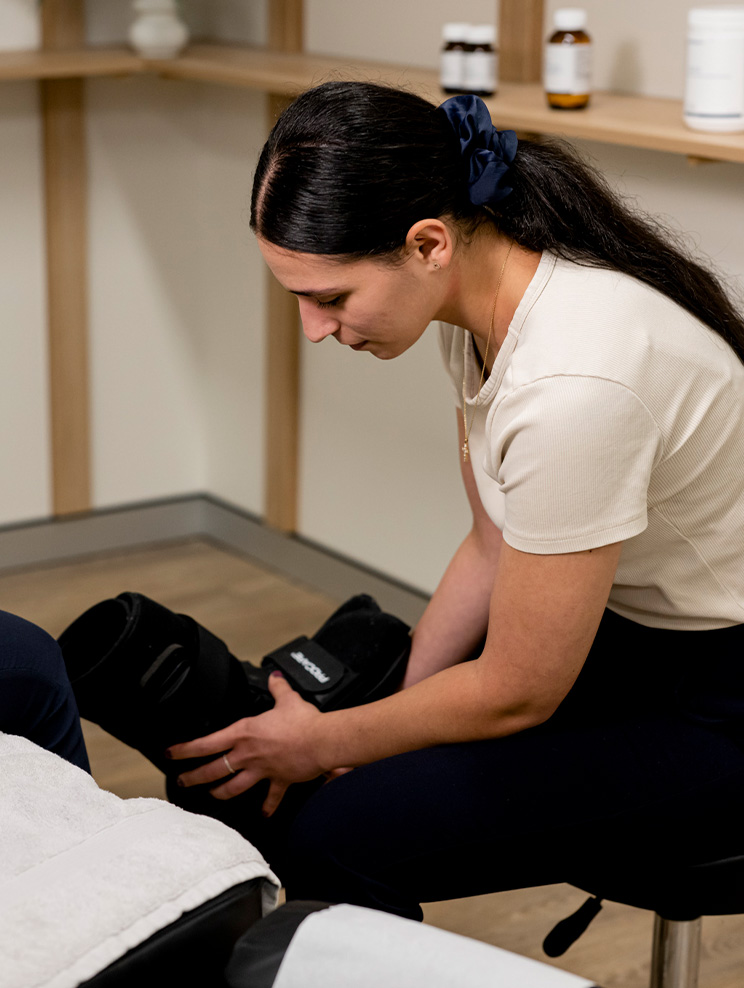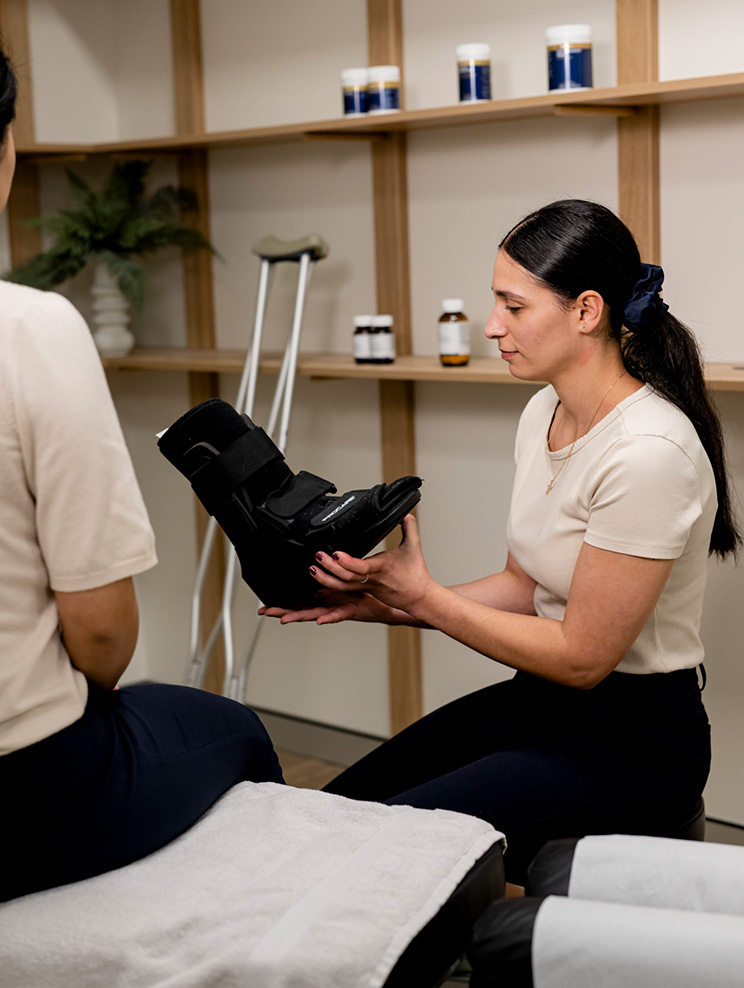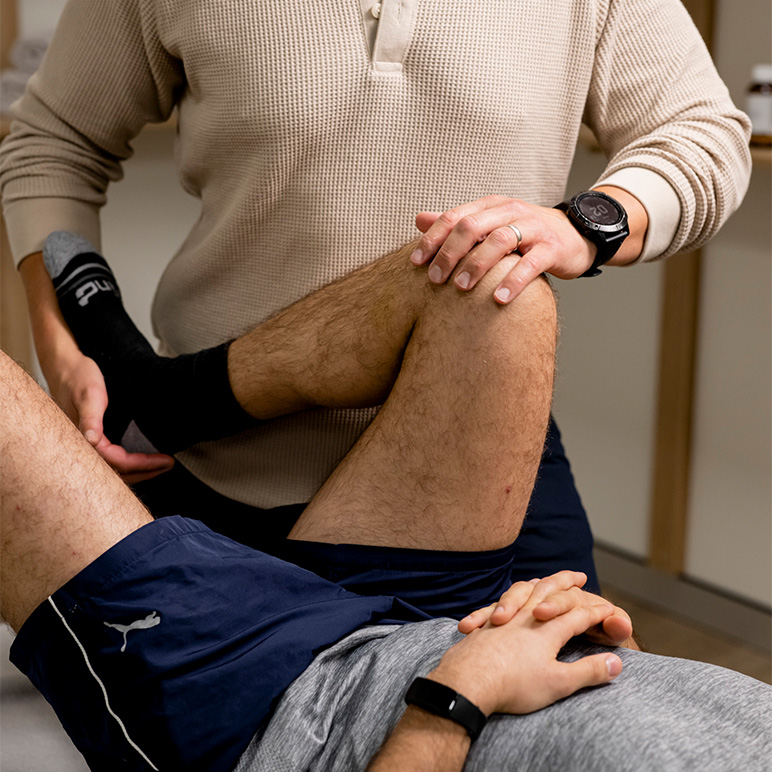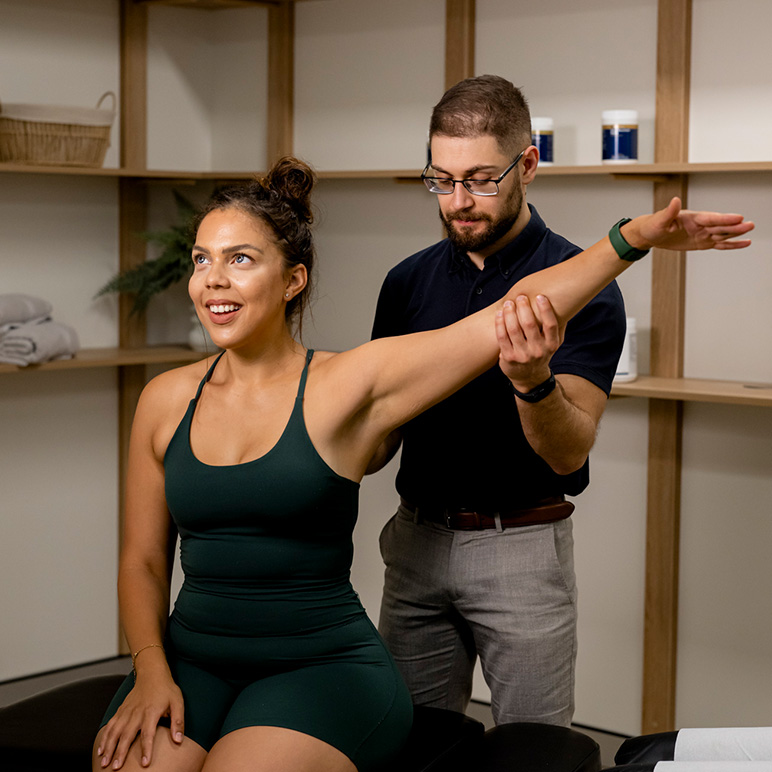
Foot & Ankle Pain Wetherill Park, NSW
Foot & Ankle Pain
The agony of foot and ankle injuries: causes, symptoms, and treatments.
Your feet and ankles are some of the most crucial parts of your body, allowing you to stand, walk, and run. However, injuries to these areas can be extremely painful and can disrupt your daily lives. We will explore some of the most common foot and ankle injuries, their causes, symptoms, and treatments.
Common causes of foot and ankle injuries:
There are several reasons why people may suffer from foot and ankle injuries, including:
- Overuse or repetitive stress injuries.
- Trauma or accidents.
- Inappropriate footwear.
- Poor biomechanics or foot structure.
- Medical conditions like arthritis or diabetes.
Types of foot and ankle injuries:
Sprains and strains
Sprains and strains occur when ligaments or muscles in the foot or ankle are stretched or torn due to trauma or overuse. Symptoms include pain, swelling, bruising, and difficulty walking. Treatment involves rest, ice, compression, and elevation (RICE), seeing your physio or chiro in Wetherill Park, and sometimes in extreme cases surgery… But let’s try and avoid that last one!
Fractures
Fractures can happen due to trauma, or stress fractures can occur from overuse. Symptoms include pain, swelling, bruising, and sometimes deformity. Treatment involves an initial period of immobilization to allow your bones to heal, followed by rehabilitation to regain mobility and develop your strength. IN some cases, for more complex fractures, surgery may be needed to stabilise the bones allowing for better healing.
Achilles Tendinitis
Achilles Tendinitis occurs when the Achilles tendon, which connects the calf muscles to the heel bone, becomes inflamed due to overuse or injury. Symptoms include pain, swelling, and stiffness in the back of the ankle. Treatment involves managing your load via modifying your activities, hands on treatment to support healing with modalities such as needling. Mobility drills and strengthening are helpful in getting you back to your best.
Plantar Fasciitis
Plantar Fasciitis occurs when the plantar fascia, a thick band of tissue that runs along the bottom of the foot, becomes inflamed and causes heel pain. Symptoms include pain in the heel or arch of the foot, especially in the morning or after prolonged sitting or standing. Treatment involves modifying your activity to unload the foot, mobility, orthotics as well as hands on techniques to reduce the tension in your lower limb.


Prevention and treatment:
- Wear appropriate footwear for your activity level and foot type.
- Practice good foot hygiene and maintain a healthy weight.
- Warm up and stretch before exercising.
- Listen to your body and rest if you experience pain or discomfort.
If you have persistent pain or swelling, reach out to one of our practitioners. Too often patients wait months and months to seek help, and then you are stuck with a sore cranky foot for much longer than needed, slowing down your treatment as the inflammation is now chronic.
Foot and ankle injuries can be painful and debilitating, but with proper prevention and treatment, you can get back on your feet in no time. Whether you’re an athlete or simply someone who enjoys a good walk, taking care of your feet and ankles is crucial for maintaining an active and healthy lifestyle.

Start your health journey with better understandings.
We are here to provide you with the most comprehensive care for your well-being, so book online or call today.
Conditions we treat
Your wellness starts here
-

Headache Treatment Wetherill Park, NSW
Read MoreFind relief from headaches and migraines with Health Collab’s customised treatment plan
-

Muscle Strains & Sprains Wetherill Park, NSW
Read MoreOvercoming sprains and fractures: a guide to a strong recovery
-

Foot & Ankle Pain Wetherill Park, NSW
Read MoreThe agony of foot and ankle injuries: causes, symptoms, and treatments
-

-

Wrist & Elbow Pain Wetherill Park, NSW
Read MoreAre you experiencing wrist and elbow pain? Here’s what you need to know
-

-

Shoulder Pain Wetherill Park, NSW
Read MoreDo you have discomfort in your shoulder? Here’s some important information you should know.
-



 Find Us
Find Us  (02) 8781 4288
(02) 8781 4288